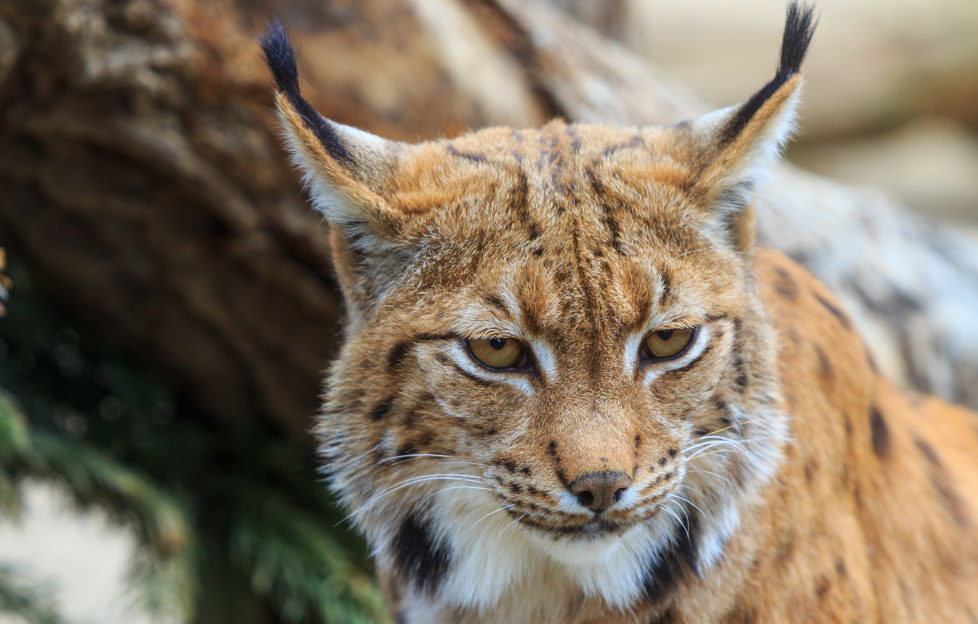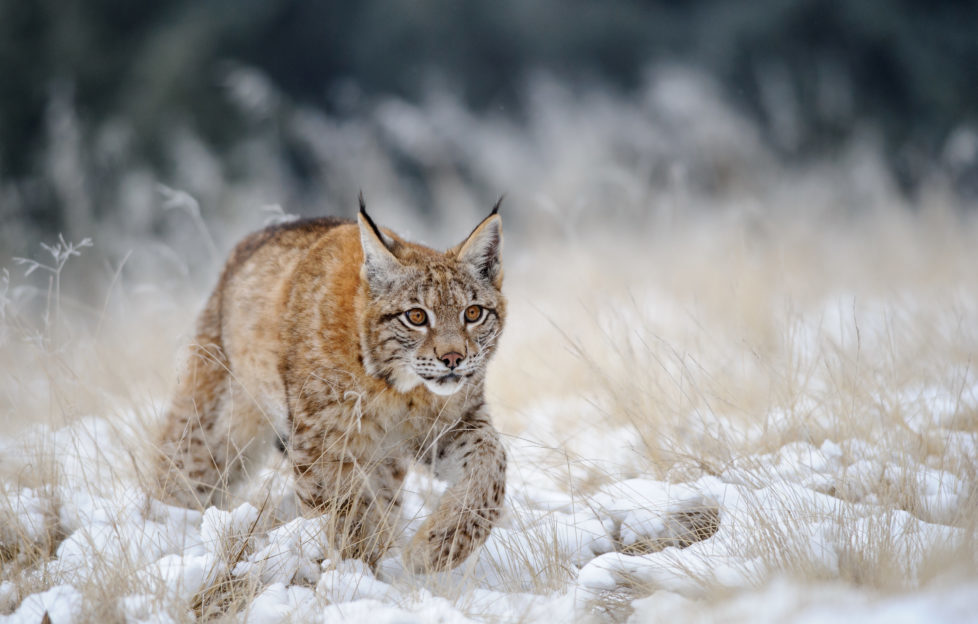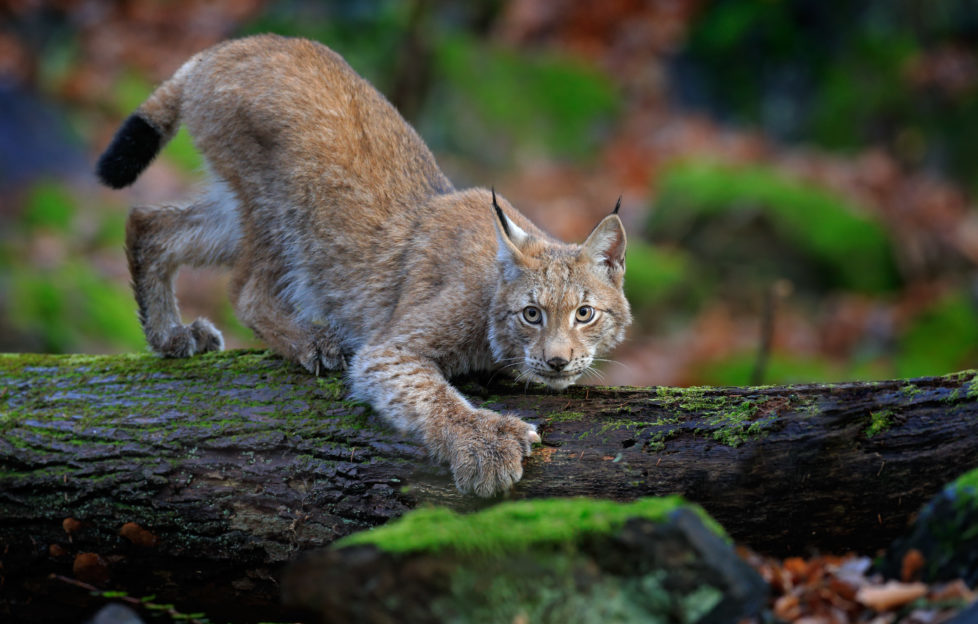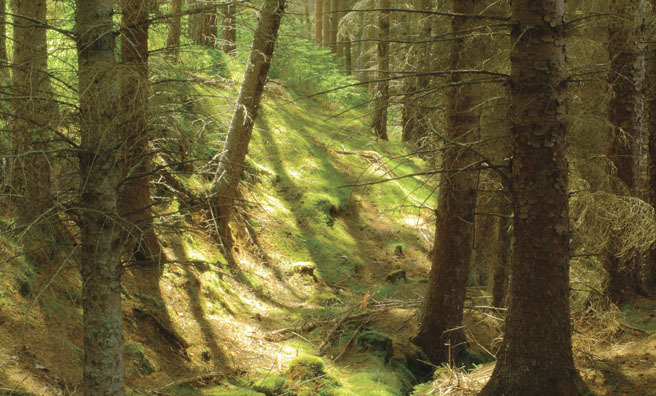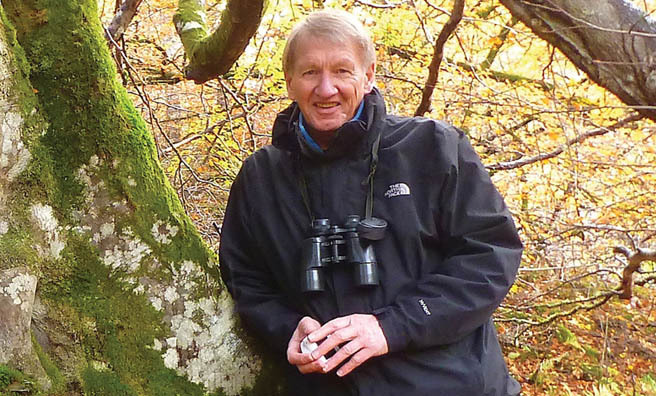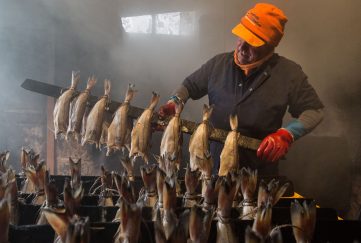The Missing Lynx
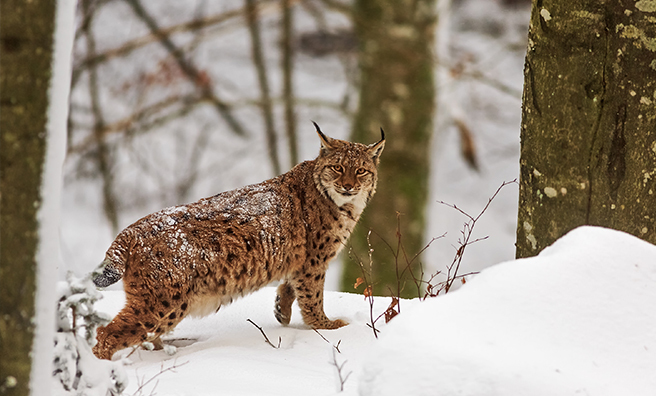
As the forests of Scotland revive, Jim Crumley reckons its about time a former resident deserves a billet
I once sat and watched a pair of captive lynxes for half an hour during which they did nothing at all.
They sprawled beneath a tree, apparently comatose. Then a pair of magpies arrived in the tree, a dozen feet overhead. The cats behaved as if they had seen and heard nothing. This went on for about 10 minutes, the magpies loud and belligerent above, the cats silent and unmoved below. One magpie danced down a couple of branches lower, so about 10 feet above the nearer lynx.
The nature of my interest changed, involuntarily, from mildly amused to tense. Neither lynx had stirred, not so much as a raised eye or a flicked tail. The very stillness, I decided, had just assumed a different quality, and I felt the new mood. If the magpie felt it, there was no indication.
“lightning that rose from the earth”
Its stream of guttural oaths flowed on unabated. What happened next is the most spectacular single demonstration of athleticism in nature I have ever seen. The lynx directly beneath the magpie never moved. The other lynx – it’s tempting to wonder if the magpie had seen there were two – moved as I have never seen anything move. The nearest I can come to doing the moment justice is to compare it to forked lightning, but lightning that rose from the earth into the air.
From a horizontal start the animal contrived a vertical spring, from the apex of which it reached up with a fearful curving slash of one foreleg whose open-clawed foot came within an inch of the magpie as it flew. In a moment the lynx was on all fours, scanned the tree once and then the clearing within its compound, found my eyes and examined them for several very long seconds, lay down again and – apparently – dozed off.
That image – the cat vertical in the air with the reaching claw high above its head – takes its place among my most precious souvenirs of nature alongside Alaskan humpback whales nudging the boat in Glacier Bay, a grizzly rising on its hind legs to inspect me from 20 yards away on Kodiak Island, a wolf in the headlights bounding across a forest track at 2am on a Norwegian mountainside, a golden eagle killing two ravens in a single dive in Glen Dochart, a white-tailed eagle lifting an eider duck from Talisker Bay on Skye without getting wet, a mute swan cob charging a fox at night across a frozen loch in Holyrood Park, and a conversation I once had with a dog otter at four in the morning on a shore of the Sleat peninsula.
The Great Wood of Caledon
What brought all that on? I was immersed in an unusually fascinating website, a page of which eloquently makes the case for reintroducing wild lynx into restored Scottish native woodland. More of that in a moment, but first, forgive me while I quote myself:
“Here and there and all across the face of the land, an old mist is rising in the face of something hopeful and enlightening, and the way ahead is slowly growing green again, and the Great Wood stirs… and begins to throw new shadows in the resurrected sun.”
These are the concluding words of the prologue of a book I wrote in 2011 called The Great Wood, a reappraisal of the past, present and future of the so-called Great Wood of Caledon.
The same theme recurred in a new book, The Eagle’s Way.
“This land has been emptied of all the big mammal predators by its people, and its forests all but emptied of its trees, also by the people… It may be that these processes have reached some kind of nadir, a rock bottom where a sluggish enlightenment has begun to stir in the gloomiest depths, for disciples of nature are planting new trees and caring for old ones, and tree-loving species flock to the first small symptoms of recovery.”
Rethinking the Great Wood
Researching The Great Wood, I concluded that there never was a single all-powerful Great Wood of Caledon, but rather that there were four great woods – the wider Trossachs area; the Central Highlands embracing the Black Wood of Rannoch, Rannoch Moor, the Black Mount, and Glen Orchy, reaching as far west as Loch Etive; the wider Cairngorms area; and a West Highland wood that sprawled south from Glen Stratht’arrar and Glen Affric to Sunart and possibly to Mull.
Today, those “disciples of nature” are practising what they preach to one extent or another in three of the four Great Woods; Rannoch, alas, is regressing if anything. In particular there is a gratifying, multi-layered endeavour at work in the north-west Highlands that promises much. In Glen Strathfarrar, an apparently unwieldy coalition of private landowners contrives to advance the cause of notable and spectacular survivals of Scots pine and aspen.
The Forestry Commission has done award-winning work in Glen Affric since the 1970s thanks to the inspiring example of Finlay MacRae, work now assisted by the EU and the Caledonian Partnership of government and conservation charities. The John Muir Trust is transforming the bare flanks of Knoydart with seed from the last surviving remnants of native trees. The Sunart Oakwoods partnership is an object lesson in what is possible when statutory authorities and local communities actually talk to each other in the pursuit of a common vision.
In Knapdale, the official population of Scottish beavers – as opposed to the unofficial one in Tayside, now nudging into the Forth catchment – is nicely poised to exploit the new opportunities in the westmost Great Wood, naturally enhancing the process the human disciples have begun.
Reviving the natural woodland
At the heart of all this commendable endeavour is an organisation with a purity of purpose that does my heart good. It promotes a vision which, if I had my way, would underpin all conservation endeavours. Trees for Life is a Findhorn-based conservation charity led by the infectiously enthusiastic Alan Watson Featherstone. Their flagship project is its own 10,000-acre Dundreggan Conservation Estate in Glen Morriston, has a mission statement with an almost sublime simplicity. You will find it on their website, which you may have gathered is the one that set free my lynx train of thought:
“Our vision is to restore a wild forest which is there for its own sake, as a home for wildlife and to fulfil the ecological function necessary for the wellbeing of the land itself.”
There is nothing populist there to appease those who think that every conservation endeavour must have a trade-off in tourism or economic sustainability or politics. The critical words are “which is there for its own sake”. This acknowledgement that the land has rights of its own and that attending to these should be conservation’s first and last priority is a glorious breath of fresh Highland air.
After complimenting some of the small steps sundry woodland restoration projects have made in the last 30 years – “encouraging but unco-ordinated” – there is this:
“To restore the true native forest, however, requires vision and action on a much larger scale. The forest is a complex living commodity of interdependent plants and animals, many of which require larger areas of habitat.”
Trees for Life leads by example. Its substantial investment in Dundreggan is a tiny part of its vision for a north-west Highlands forest. The forest would cover 1000 square miles, from Garve and Achnasheen in the north to Glen Morriston in the south and from Loch Ness to Loch Duich in the west. This year, Trees for Life celebrated their 25th anniversary and the planting of its one millionth tree. It has also cheerfully announced plans to plant one million more in the next four years.
All this is for nature, to secure a place in the land for fragile animal and plant communities, and to create space on the required scale for our missing mammals, notably beaver and lynx, and when the time is right – surely sooner rather than later now – European brown bear and wolf.
In a country like Scotland, nature’s default position is to plant trees, wherever and whenever it has the chance. It has been that way since the ice relented 10,000 years ago but as Trees for Life explains, “most remnants will disappear in the next few decades. Thus we are the last generation with the opportunity to save the Caledonian Forest.”
Elementals are not governable
In my copy of The Living Mountain by Nan Shepherd I have marked resonant passages from my earliest reading, almost 40 years ago now one says: “One walks among elementals, and elementals are not governable.”
Slowly, which is the only way it can happen, the cause of nature – of elementals – is advancing in Scotland. Even as the old regime of grouse moor and deer forest grows discredited. The people are coming round to the idea that tine land matters for its own sake, that the health of the land and the health of the people are intertwined. Somewhere down that road, distant but drawing nearer, lies the awareness of our right to reclaim the animal nature we have been taught to suppress.
The further we go along that road, the closer we grow to nature, the more we walk among the ungovernable elementals.
On the website of Trees for Life I had been enjoying Alan Watson Featherstone’s blog about an aspen tree, I clicked on a link and there was a picture of a lynx…
- Glenmore Forest, Cairngorms National Park (Pic: Shutterstock)
More from Jim…
Don’t miss Jim’s regular column Wild About Scotland in every issue of The Scots Magazine, available here.
More of Jim’s nature pieces can be found online, too, in his corner of our website.


